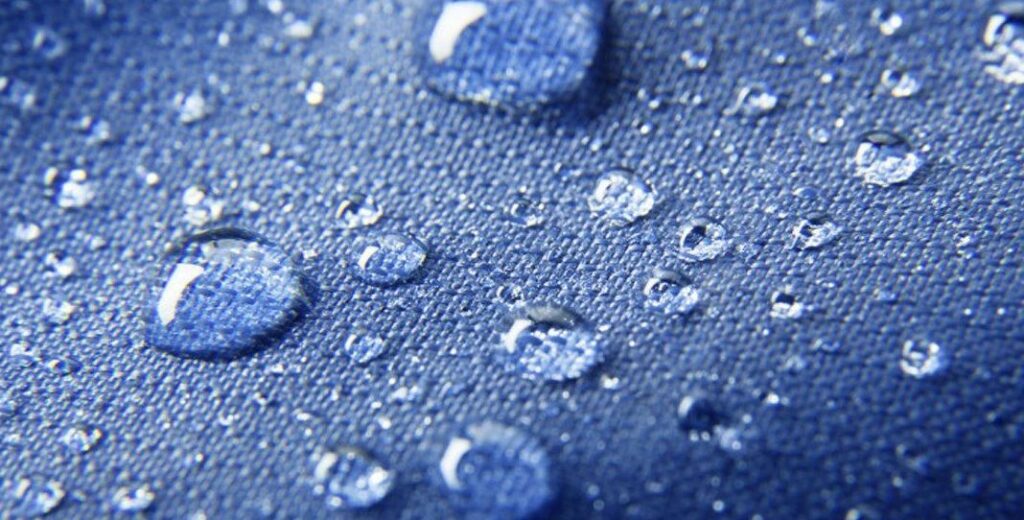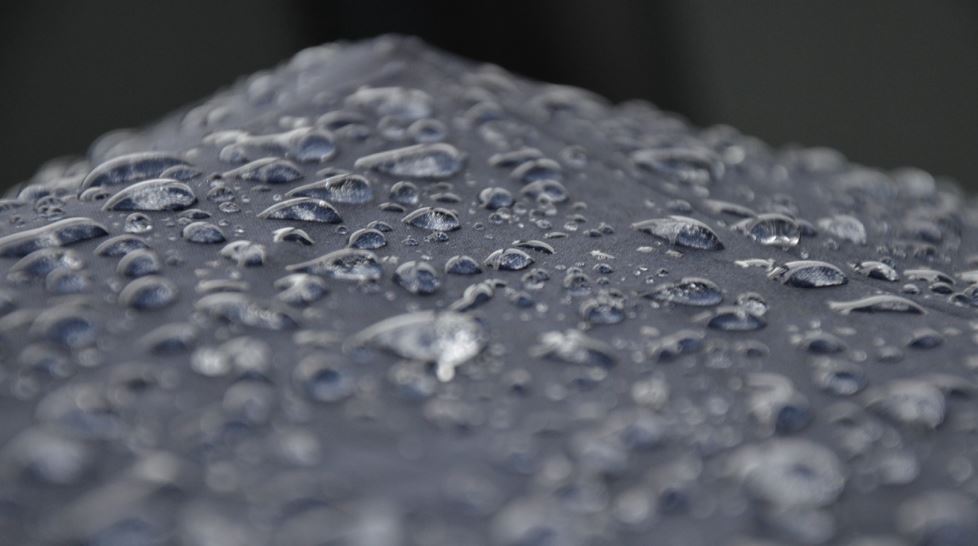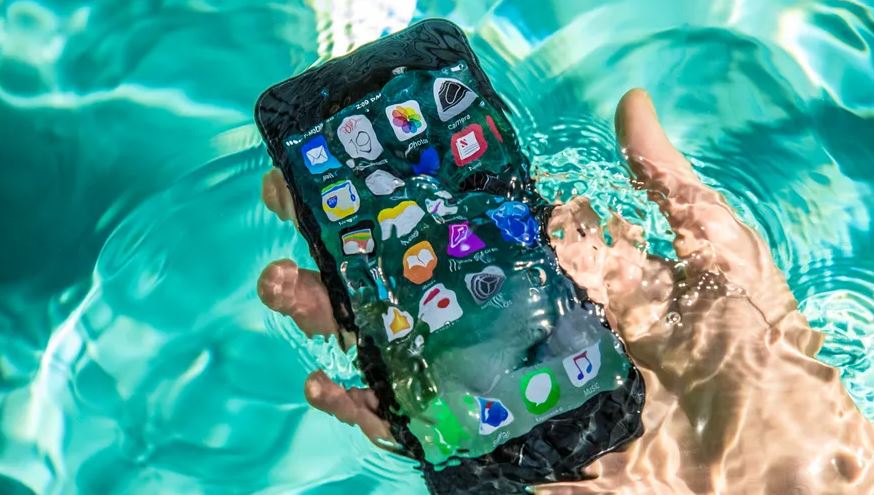Last Updated on October 28, 2023
When shopping for electronic devices like watches, cellphones, cameras, or even mechanical keyboards, you might come across terms like “water-resistant,” “water-repellent,” and “waterproof.” While these terms all suggest protection against water, they each have distinct features and capabilities. In this article, we’ll delve into the differences between water resistance, water repellency, and waterproofing, and we’ll explore what to do if you accidentally spill water on your mechanical keyboard.
Water Resistant

Water-resistant products, as defined by the Oxford English Dictionary, can withstand a certain level of water penetration, but they are not entirely impervious to water. Items labeled as water-resistant are typically coated with a material that provides some degree of protection against exposure to water. While water-resistant products can handle light splashes, such as drizzling rain, handwashing, or riding a motorcycle in light rain, they are not suitable for prolonged submersion.
Common examples of water-resistant products include watches, mechanical keyboards, computer mice, portable speakers, and some smartphone models. These items offer a degree of protection against accidental spills and light moisture but should not be fully submerged in water.
Water Repellent

Water-repellent products offer a higher level of water resistance than their water-resistant counterparts. According to the Oxford English Dictionary, water-repellent items are not easily penetrated by water, primarily due to their manufacturing process and surface coatings. Water-repellent materials exhibit a more pronounced hydrophobic nature, making them better at repelling water.
Water-repellent products often feature specialized coatings that actively resist water penetration. This advanced protection is particularly beneficial for items that may be exposed to more challenging water conditions. Common examples of water-repellent products include bags, jackets, and certain automotive accessories.
Waterproof

Waterproof products are at the highest level of water resistance, as indicated by the Oxford English University dictionary’s definition of “waterproof.” The degree of waterproofness is typically measured using an IP (Ingress Protection) code, which consists of two digits to assess a product’s ability to resist the intrusion of both solid objects and liquids.
The first digit in the IP code indicates the product’s resistance to solid objects, such as dust and debris, while the second digit indicates its resistance to liquids. For example, a smartphone with an IP67 or IP68 rating means that the number 6 suggests dust resistance, and the number 7 or 8 signifies the product’s ability to withstand water submersion to a specific depth.
Waterproof products, such as some smartphones and cameras, are rigorously tested to ensure they can resist not only splashes and rain but also submersion in water. They are designed for use in more challenging environments, where water exposure is a significant concern.
What To Do If You Spill Water On Your Keyboard
Accidentally spilling water on your mechanical keyboard can be stressful, but there’s no need to panic. Here’s a comprehensive guide on how to address this issue effectively:
1. Unplug Your Keyboard
The first step is to immediately disconnect your keyboard by unplugging it from your computer or laptop. An electrical device exposed to water can lead to short circuits, potentially damaging your keyboard components, especially the PCB (printed circuit board).
2. Remove the Keys
Next, remove all the keycaps from the stem switches on your mechanical keyboard. This step allows you to identify which parts of your keyboard have been exposed to water. Additionally, removing the keycaps makes it easier to clean and dry your keyboard thoroughly. You can also take this opportunity to clean the keycaps, restoring them to their pristine condition.
3. Flip The Keyboard Over
Flipping your keyboard over will help drain any remaining water from its surface. This step accelerates the drying process and prevents water from accumulating in certain areas. Make sure to flip the keyboard for a few minutes to allow any trapped water to escape.
4. Wipe Up Excess Water
After flipping your keyboard, use simple tools like a mini vacuum for computers, microfiber towels, and clips to secure the towels in hard-to-reach areas. Ensure that you clean all parts exposed to water and eliminate any lingering spots or puddles. Accumulated water can often be found beneath the keycaps, on switch housings, plates, and inside the keyboard casing. Periodically flip the keyboard to make sure all water is removed, and shake it while in the flipped position to prevent pooling in specific gaps.
5. Wait for 48 Hours
To guarantee your mechanical keyboard is completely dry and free from water, leave it in a flipped position for 48 hours. Avoid reinstalling keycaps during this time to facilitate effective water drainage.
6. Plug In And Test
Once you’ve completed the previous steps, test your mechanical keyboard to ensure all its functions are working correctly. Reconnect it to your computer or laptop and assess the functionality of all the keys. Online tools like the Key-test website can assist you in checking the performance of each key swiftly.
If everything works as expected, you can proceed to reattach your keycaps.
7. Install Mechanical Keyboard Keycaps
After ensuring your keyboard is completely dry, it’s time to reattach the cleaned keycaps. Ensure the keycaps are dry before attaching them to the stem switches, and be meticulous in ensuring each keycap is correctly positioned.
So, Are Mechanical Keyboards Waterproof?
In conclusion, mechanical keyboards are not inherently waterproof, but some products offer spill and water-resistant features that have undergone technical testing to minimize damage when exposed to water. These features, while effective to a certain extent, do not guarantee complete protection.
Mechanical keyboards are known for their durability, surpassing membrane keyboards and other common keyboard types. However, they should not be compared to devices like smartphones or cameras with IP67 or IP68 waterproof certifications, which are engineered for immersion in water. While mechanical keyboards can withstand accidental spills and light moisture, it’s crucial to follow proper procedures, as detailed in this article, if water exposure occurs.
Remember that water-resistant, water-repellent, and waterproof are distinct categories, each serving its purpose. Always check the manufacturer’s specifications to understand the level of water protection your keyboard or other electronic devices offer.
Kizaru is a fan, collector, and has a huge addiction to mechanical keyboards. Kizaru has a collection of dozens of mechanical keyboards that come in different sizes and use different switches. He also frequently contributes to various forums that discuss keyboards such as Reddit and GeekHack.

